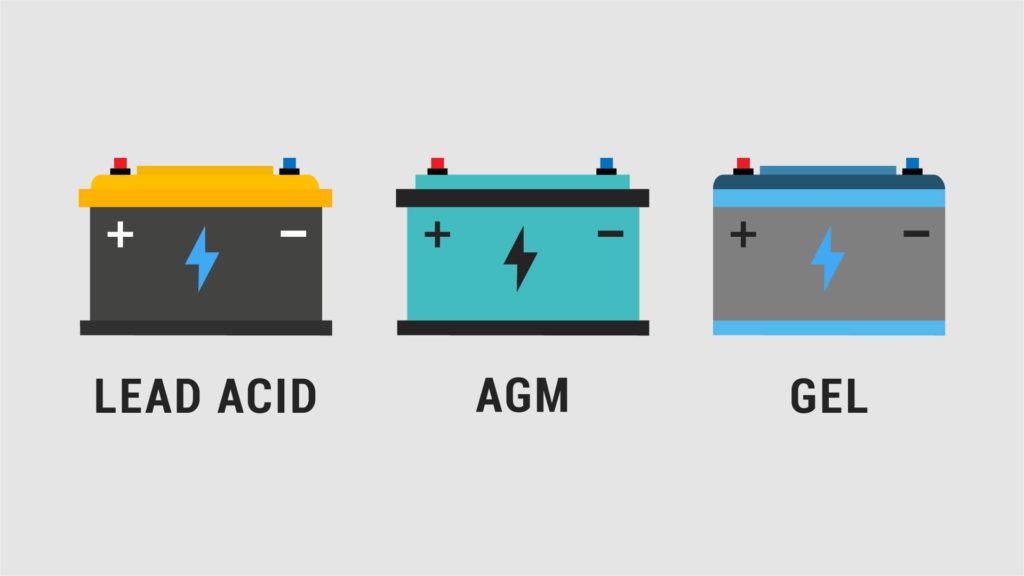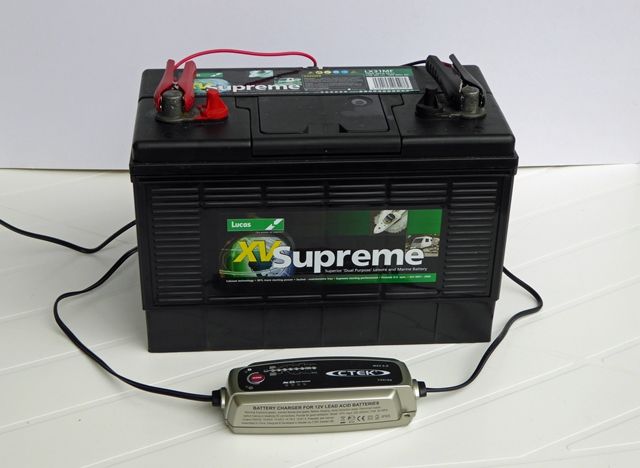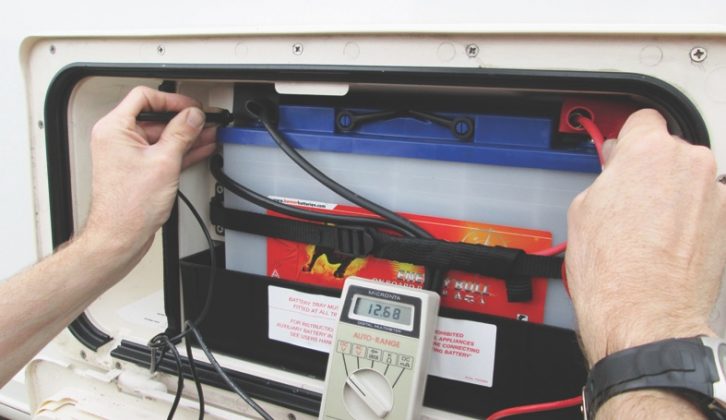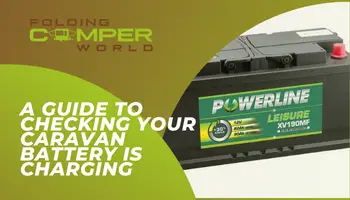A vital part of being a caravan owner is ensuring that your caravan is kept in good condition and that everything is running smoothly. One of the parts of your caravan that is important to check is the battery. The battery in a caravan is a little different to the batteries you find in cars as they both have different purposes. That battery in your caravan is called a leisure battery and is used to the vital parts that make you caravan a space to live in, such as using the lighting and the kitchen appliances. Since it plays such a pivotal role is the operation of a caravan, it’s important to check your battery regularly. Many first time caravan owners often face some confusion when trying to recharge their leisure battery, especially when it comes to knowing if their battery is charging. In this blog post, I will outline everything you need to know about leisure batteries and how to make sure you battery is charging.
The most accurate way to check that your battery is charging is to use a meter to read the voltage. If the voltage has increased since you first put your battery on charge, then that means it is charging. It’s important to know that it can take a few hours before your meter reading can increase, especially if your battery level was very low when you put it on charge. you may have to allow a few hours or even a full day before the meter reading changes.
The blog post below will cover the following:
- What is a leisure battery?
- Different types of leisure batteries
- Charging a leisure battery
- How to know if your battery is charging
- Conclusion
What is a leisure battery?

A leisure battery is the power source that allows the appliances and equipment in a caravan or motorhome to work. It is designed to provide a steady level of power over a prolonged period of time, which is then used all the important aspects of your caravan such as the lights, TV, kettle, oven and other electrical appliances. having these electrical appliances and equipment in you caravan is what makes this a liveable space rather than just a vehicle, which is why the leisure battery plays such a huge part in the function of your caravan.
Many people assume that a leisure battery and a car battery are the same thing as they both look very similar, however this is not the case. They are two very different power sources with difference uses. For example a car battery is designed to provide a burst of energy to start the engine when required. On the other hand a leisure battery will release a lower level of energy over a prolonged period of time in order to power appliances.
When it comes to the physical appearance of these batteries, the two can be differentiated by the fact that a car battery has thinner plates and different separators. This means that it is not as well-equipped to deal with a prolonged period of use for a lower level of energy, and vice versa for leisure batteries.
Different types of leisure batteries

Lead-acid batteries
In most cases, leisure batteries are lead-acid batteries, as these are the most widely used batteries. Within lead-acid batteries, there are a few different types that are available. These include:
- Standard starter batteries
- Standard leisure batteries
- Semi traction and traction batteries
Gel batteries
Commonly used in jet skis and quad bikes, gel batteries are designed for vehicles that have a higher than average risk of crashing. This is because the use of gel inside the battery removes the risk of damage from being tipped over and, therefore, the risk of injury from leaking corrosive acid. Although it is not common to see gel batteries in caravans, some imported caravans and motorhomes are now fitted with gel batteries for extra protection in the event of an accident.
AGM batteries
AGM stands for Absorbent Glass Mat batteries, which comprise of lead plates and compressed glass fibre in each cell. This combination makes the battery capable of a much longer lifespan than a lead-acid one. However, a downfall of this is that it is also more expensive to produce.
Maintenance-free batteries
Most conventional batteries have removable caps to allow the acid levels to be topped up with deionised water when needed. However some manufacturers are now producing maintenance-free batteries which are a sealed unit, meaning it cannot be topped up, making the maintenance of this battery much simpler.
Charging a leisure battery

When charging your leisure battery, it’s important to leave it so charge it slowly over a day or two. If you have a ‘smart charger’ or fully automated leisure battery charger it can stay connected to your battery without having to worry about it causing any damage to your battery or your caravan. If you have a cheaper charger, you need to ensure that you switch it off as soon as it reaches the full charge, as leaving it too long to overcharge will cause serious damage. Overcharging creates too much heat and eventually will buckle the plates and ruin their active material.
Before proceeding to charge your battery, you must ensure that you have unhooked it from everything in order to keep the charging process running smooth without any interference. It’s important to note that in the early stage of charging, the battery will charge more quickly, but as it gets nearer to full charge, the process will slow down. If your battery level was really low to begin with, then it could take a good few hours before you see any progress.
How to know if your battery is charging

Most modern caravans have a display that shows the level of your battery. This is the fastest and easiest way to check if your batter is charging as the battery display will show a lightening bolt symbol and you can even watch the voltage going higher each hour via the display. However, this display is not always accurate, which is why most caravan users prefer to invest in a handheld metre, which can give more accurate readings.
These handheld meters can be hooked on you to battery to show you how much voltage is has left. The best way to check if your batter is being charged is to check the meter reading before putting your battery on to charge, and then again in a few hours to see if there is any difference. As previously mentioned, it can take a few hours before your meter reading can increase, especially if your battery level was very low when you out it on charge. you may have to allow a few hours or even a full day before the meter reading changes.
Below is a table explaining how much batter percentage the voltage is equivalent to.
| Meter reading | Battery percentage |
|---|---|
| 12.7v | 100% |
| 12.5v | 75% |
| 12.4v | 50% |
| 12.2v | 25% |
| 12v | Discharged/ flat battery |
Conclusion
It is important to know the difference between a car battery and a leisure battery as they both have different purposes. A leisure battery plays a huge role is functioning the everyday elements of your caravan which is why it’s so important to ensure that you charge it before it goes flat. This blog post has explained how you can charge your battery.


